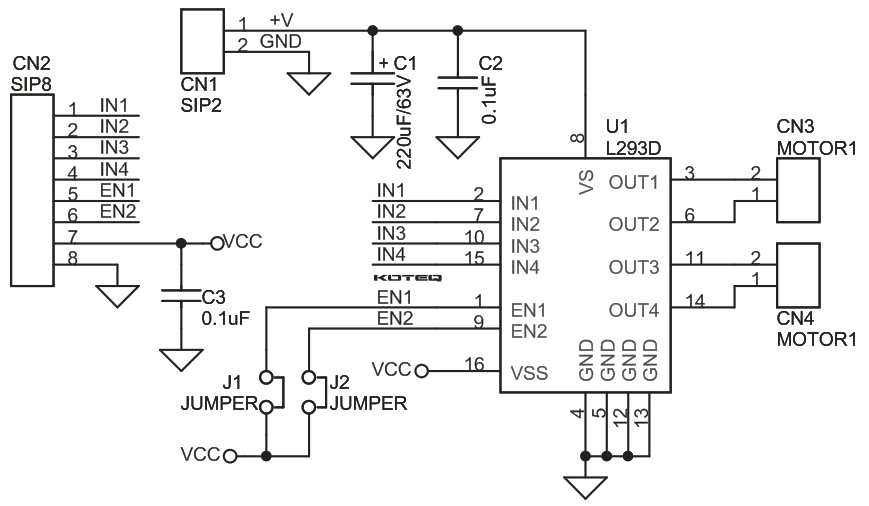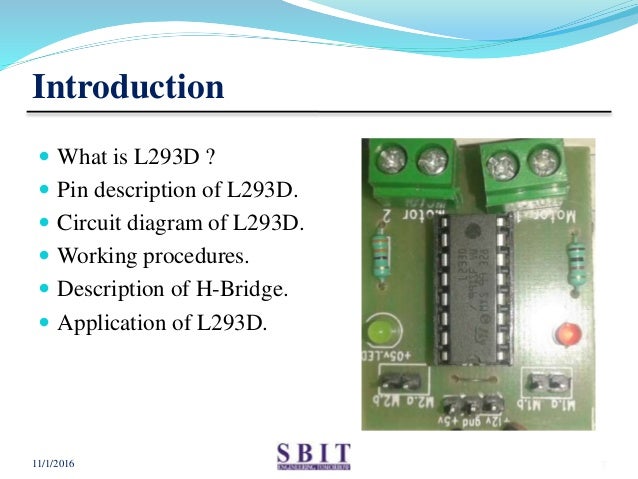L293d Motor Driver Circuit Diagram Pdf
Here is some intro about L293D ICL293D is a motor driver IC that can. Place all the components on the PCB according to schematic. LAYOUT TOP.pdf.


Pod andreevskim flagom klyuch. Hello Guys, In this instructable I will instruct you how to make your own L293D driver board with less number of components which will also compatible with all development boards. Here is some intro about L293D IC L293D is a motor driver IC that can drive two motor simultaneously. L293D IC is a dual H-bridge motor driver IC. One H-bridge is capable to drive a dc motor in bidirectional.
L293D IC is a current enhancing IC as the output from the sensor is not able to drive motors itself so L293D is used for this purpose. Zuken e3 training. L293D is a 16 pin IC having two enables pins which should always be remain high to enable both the H-bridges. Now lets start our process!
The L293 and L293D are quadruple high-current half-H drivers. The L293 is designed to provide bidirectional drive currents of up to 1 A at voltages from 4.5 V to 36 V.
The L293D is designed to provide bidirectional drive currents of up to 600-mA at voltages from 4.5 V to 36 V. Both devices are designed to drive inductive loads such as relays, solenoids, dc and bipolar stepping motors, as well as other high-current/high-voltage loads in positive-supply applications. All inputs are TTL compatible. Each output is a complete totem-pole drive circuit, with a Darlington transistor sink and a pseudo-Darlington source. Drivers are enabled in pairs, with drivers 1 and 2 enabled by 1,2EN and drivers 3 and 4 enabled by 3,4EN.
When an enable input is high, the associated drivers are enabled and their outputs are active and in phase w ith their inputs. When the enable input is low, those drivers are disabled and their outputs are off and in the high-impedance state.
With the proper data inputs, each pair of drivers forms a full-H (or bridge) reversible drive suitable for solenoid or motor applications. On the L293, external high-speed output clamp diodes should be used for inductive transient suppression.